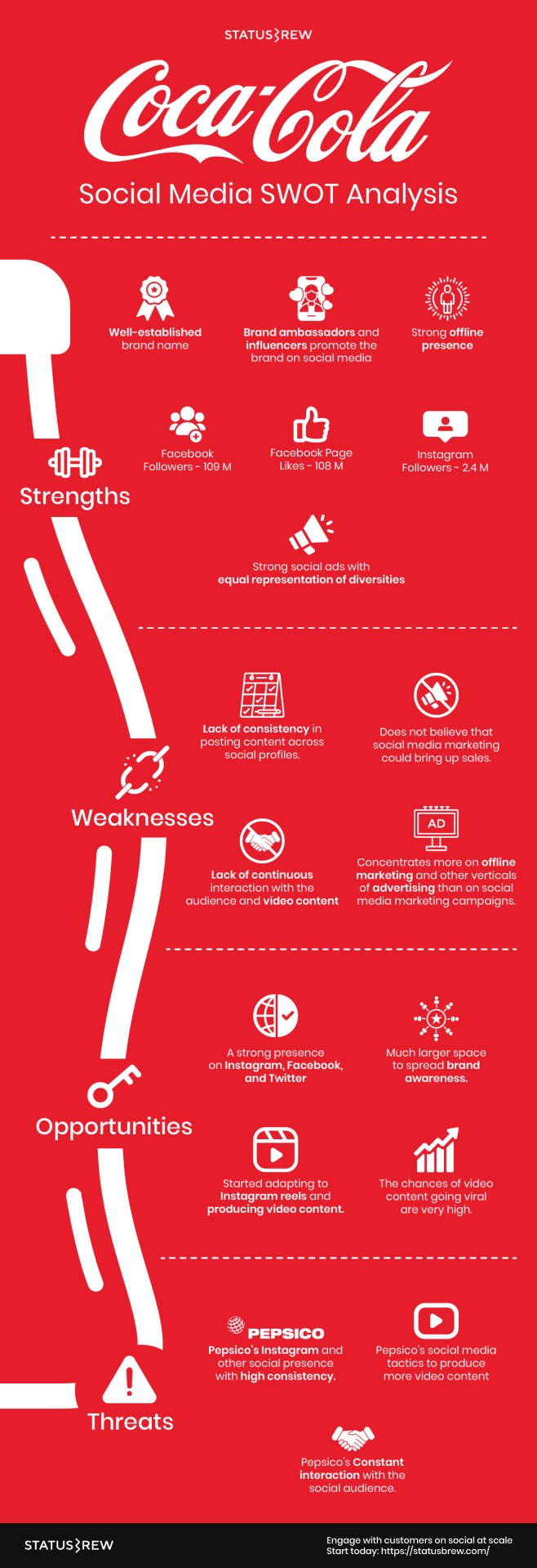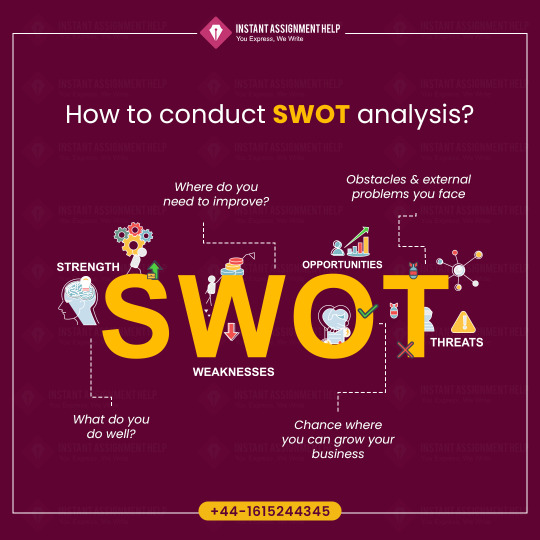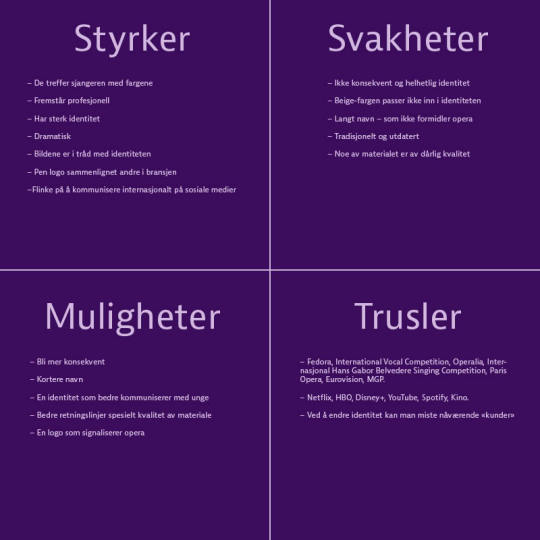#SWOT analysis
Text

some totk links i drew for a project in business class
#go go swot analysis#i had to draw base link so that he’s recognizable but hey i still got to draw him for class#been working my ass off but i have a break soon so more fun art ig#two more weeks#anyways have a great day :)#art#fanart#froggtogs#legend of zelda#totk link#link totk#tears of the kingdom#swot analysis#swot#loz totk#totk fanart
203 notes
·
View notes
Text
SWOT Analysis: Everything You Need to Know for Your Business Strategy [2024]
https://selfedu.in/swot-analysis-everything-you-need-to-know-2024/

2 notes
·
View notes
Text
SWOT Analysis for Your Social Media Business Accounts with Key Metrics

In the dynamic world of digital marketing, social media platforms serve as essential channels for businesses to engage with their audience. For a marketing director, periodically assessing your social media business accounts is vital. A SWOT analysis, augmented with key metrics, provides a holistic perspective, enabling a more data-driven social media strategy.
Strengths:
Direct Engagement: Social platforms empower businesses to converse with their audience instantly.
Metric: Engagement Rate (likes, shares, comments per post)
Cost-Effective Branding: Crafting an impactful brand identity can be achieved economically.
Metric: Cost Per Impression (CPI) or Cost Per Engagement (CPE)
Diverse Demographic Reach: Platforms cater to various demographics, broadening potential outreach.
Metric: Audience Demographic Distribution (age, gender, location)
Weaknesses:
Time Intensive: Consistently producing quality content and interaction requires significant time.
Metric: Time Spent per Post vs. Engagement
Reputation Risk: A single negative comment or review can have a ripple effect.
Metric: Negative Sentiment Percentage in Comments/Reviews
Dependence on Platform Algorithms: Organic visibility can be curtailed by algorithm changes.
Metric: Organic Reach Rate
Opportunities:
Leveraging Influencers: Partnering with industry-relevant influencers can amplify your brand’s voice.
Metric: Engagement and Conversion Rates on Influencer-driven Posts
E-commerce Integrations: Merging content and commerce is now more seamless, especially on platforms like Instagram.
Metric: Click-through Rate (CTR) for Shoppable Posts
Emerging Platforms: Early adoption of new platforms can offer unique advantages.
Metric: Growth Rate and Engagement on New Platforms
Threats:
Platform Saturation: Standing out amidst the cacophony is challenging.
Metric: Share of Voice (percentage of total conversations about your brand vs. competitors)
Shifts in User Preferences: Platform migration can affect your core audience.
Metric: Monthly Active Users and Churn Rate
Ad-Blocker Proliferation: Reaching audiences through ads is increasingly complex.
Metric: Ad Visibility Rate and Effectiveness
Wrapping Up
Integrating metrics into your SWOT analysis ensures a more grounded and actionable assessment of your social media endeavors. By amalgamating qualitative insights with quantitative data, you’ll be better positioned to optimize engagement, navigate challenges, and realize your business goals.
4 notes
·
View notes
Link
4 notes
·
View notes
Photo

To read more , click here
2 notes
·
View notes
Text

Dette er vår SWOT-analyse
3 notes
·
View notes
Text
What Is Market Research: Methods, Types & Examples
Learn about the fundamentals of market research, including various methods, types, and real-life examples. Discover how market research can benefit your business and gain insights into consumer behavior, trends, and preferences.
#Market research#Methods#Types#Examples#Data collection#Surveys#Interviews#Focus groups#Observation#Experimentation#Quantitative research#Qualitative research#Primary research#Secondary research#Online research#Offline research#Demographic analysis#Psychographic analysis#Geographic analysis#Market segmentation#Target market#Consumer behavior#Trends analysis#Competitor analysis#SWOT analysis#PESTLE analysis#Customer satisfaction#Brand perception#Product testing#Concept testing
0 notes
Text
SWOT Analysis (Strengths, Weaknesses, Opportunities and Threats Analysis)

SWOT Analysis (Strengths, Weaknesses, Opportunities and Threats Analysis)
SWOT analysis is a strategic planning tool used to identify and understand the internal and external factors that can impact an organization. A SWOT analysis examines the strengths, weaknesses, opportunities, and threats facing a business, providing a comprehensive overview of its current position.
To conduct a SWOT analysis, businesses can use a SWOT analysis template to organize their findings. For those new to the concept, an example for SWOT analysis can be helpful in understanding how to apply this framework effectively. By exploring SWOT analysis examples, businesses can gain insights on how to leverage their strengths, address their weaknesses, capitalize on opportunities, and mitigate threats.
What Is a Swot Analysis?
Moving forward, understanding the SWOT analysis is essential for strategic planning. This analysis involves evaluating the strengths, weaknesses, opportunities, and threats that can impact a business or project. It provides a comprehensive overview of the internal and external factors that can influence success.
The SWOT analysis helps in identifying areas where a business excels and where it may need improvement. By examining both the positive and negative aspects, organizations can develop strategies to capitalize on strengths, address weaknesses, leverage opportunities, and mitigate threats.
SWOT analysis is typically presented in a four-quadrant format, allowing for a visual representation of the findings. For instance, strengths and weaknesses are internal factors, while opportunities and threats are external factors. This structured approach enables decision-makers to make informed choices based on a thorough assessment of the current situation.
When and Why Should You Do a Swot Analysis?
When considering the ideal timing for conducting a SWOT analysis, it is crucial to emphasize the significance of strategic planning. By undertaking a SWOT analysis at the outset of a project, you can proactively identify potential opportunities and threats that might impact your objectives. Moreover, a thorough assessment of internal strengths and weaknesses can empower you to leverage your advantages while addressing areas for improvement. This structured approach offers a comprehensive overview of your current position in the market, enabling you to make informed decisions moving forward. For instance, examining how external factors such as market trends or competitive dynamics could influence your organization allows you to anticipate challenges and adapt accordingly.
Elements of a Swot Analysis
Elements of a SWOT Analysis
Visualize your business as a puzzle with four essential pieces that fit together perfectly to form a complete picture of your strategy and potential. Each element plays a crucial role in uncovering opportunities and addressing challenges in your business landscape.
Firstly, you need to identify the strengths of your organization, those unique qualities that set you apart from competitors. These are the attributes that give you a competitive edge. Next, focus on weaknesses, the areas where improvement is needed to enhance performance.
Moving on to external factors, explore the opportunities that the market presents. These are openings for growth and expansion that you can capitalize on. Finally, analyze the threats looming on the horizon, such as changing regulations or fierce competition.
*By carefully examining each of these elements, you can develop a comprehensive understanding of your business environment and make informed decisions to steer your company towards success.
How to Do a Swot Analysis
Are you ready to dive into the exciting world of analyzing your business's strengths, weaknesses, opportunities, and threats? Let's explore how to conduct a SWOT analysis effectively.
To begin, gather a diverse team of individuals from various departments to provide a comprehensive perspective on your organization. In the format of a SWOT analysis, create a grid with four quadrants labeled "Strengths," "Weaknesses," "Opportunities," and "Threats." Next, brainstorm with your team to fill out each quadrant with relevant factors.
When identifying Strengths, consider what sets your business apart from competitors. For Weaknesses, pinpoint areas needing improvement to enhance overall performance. Explore Opportunities for growth and expansion, while also recognizing potential Threats that could hinder progress.
Remember, a well-executed SWOT analysis can provide valuable insights to guide strategic decision-making and propel your business to success.
Example of a Swot Analysis
Moving on to an Example of a SWOT Analysis, let's consider a small bakery business as our case study. Imagine a cozy bakery nestled in a charming neighborhood bustling with foot traffic.
Strengths of this bakery may include its prime location, loyal customer base, and delicious freshly baked goods. On the other hand, Weaknesses could be limited seating space, high ingredient costs, and reliance on foot traffic for sales.
Opportunities for the bakery could be expanding to online sales, introducing new menu items, or collaborating with local coffee shops. However, Threats such as increasing competition from chain bakeries, fluctuating ingredient prices, and changing consumer preferences should not be overlooked.
By conducting a SWOT analysis like this, the bakery can leverage its strengths, address its weaknesses, seize opportunities, and mitigate threats to ensure long-term success in the competitive bakery market.
How to Use a Swot Analysis
Moving forward, let's explore how to use a SWOT analysis effectively. Understanding the SWOT analysis format is just the beginning. Utilizing this powerful tool involves careful examination of each component to uncover valuable insights.
Begin by identifying your strengths and leveraging them to capitalize on opportunities. Next, address any weaknesses by developing strategies to mitigate or improve them. Then, seize the opportunities that align with your strengths, while keeping an eye on potential threats that may jeopardize your success.
Remember, a SWOT analysis is not just a one-time exercise; it should be continuously revisited to adapt to changing circumstances.
Swot Analysis Pros and Cons
Exploring the Bright and Dark Sides
In order to make informed decisions, it is crucial to understand the advantages and limitations of conducting a SWOT analysis. While this strategic tool provides valuable insights into internal strengths and weaknesses, as well as external opportunities and threats, it is essential to acknowledge its pros and cons.
On the positive side, a SWOT analysis enables organizations to identify key areas for growth, develop effective strategies, and enhance competitive advantages. By gaining a comprehensive understanding of their position in the market, businesses can make informed decisions that align with their goals and objectives.
However, it is important to be aware of the drawbacks of a SWOT analysis. One limitation is that it may oversimplify complex situations, leading to a narrow focus on certain aspects while neglecting others. Additionally, relying solely on this analysis may result in overlooking potential risks or underestimating competitors' actions.
In conclusion, while a SWOT analysis can be a valuable tool, it is essential to use it in conjunction with other strategic methods to ensure a well-rounded decision-making process.
Conclusion
In conclusion, a SWOT analysis is a valuable tool for evaluating the internal strengths and weaknesses, as well as external opportunities and threats of a business or project. By identifying these factors, organizations can make informed decisions and develop effective strategies. Conducting a SWOT analysis can provide a clear understanding of the current state of affairs and guide future actions.
Overall, SWOT analysis is a versatile method that can be applied to various scenarios, from business planning to personal development. Understanding the meaning and format of a SWOT analysis is essential for leveraging its benefits. By utilizing the insights gained from a SWOT analysis, individuals and organizations can navigate challenges, capitalize on opportunities, and achieve their goals.
#swot analysis#swot analysis template#swot analysis example#swot analysis definition#swot analysis meaning#swot analysis format#swot analysis with example#example for swot analysis#swot analysis examples
0 notes
Text
What are the four parts of a SWOT analysis - Analysing Your Business's Strengths and Threats

Introduction:
You must have seen many times that some companies are growing very easily but some companies are just struggling to stay in the market. Why is this happening? What method do these websites use? What is the strategy by which you can reduce your competition? How can you prepare a strategy for your business? You can get answers to all these questions with the help of SWOT analysis. With the help of SWOT analysis, you can give the right direction to your business.
Take a pause and assume –
What are your business’s superpowers?
What are its Achilles’ heels?
And what about the large, huge world out of doors – any golden opportunities or looming threats out there?
With SWOT analysis, you will get answers to these questions. You can discover your internal strengths and weaknesses while keeping an eye on the ever-changing area of possibilities and threats. It’s not just knowing about where you stand; it’s about using that knowledge to decide your plans for growth, capitalise on your strengths, strengthen up your weaknesses, understand opportunities, and prevent yourself from any hidden threats.
So, are you prepared to start on this strategic adventure?
Understanding SWOT Analysis:
SWOT evaluation provides you a strategy for making plans used to perceive and examine the internal Strengths and Weaknesses of a company, in addition to the external opportunities and threats it could face. By evaluating those elements, businesses gain precious insights into their current role and prospects.
What are the four parts of a SWOT analysis- this involves making a chart with the four groups:
Strength
Weakness
Opportunity
Threat
Identifying Your Business’s advantages (Strengths): make a list of what’s driving your business forward. This includes components like what sets you apart from competitors, the areas where you excel, and the assets and assets you’ve got at your disposal.
Strengths in an enterprise are the matters in the enterprise that make it stand out and do properly compared to others. These can include having an excellent popularity, skilled employees, and clean approaches of doing things. For example, a business might be strong due to the fact people understand and consider its logo, its employees are sincerely accurate at their jobs, it employs modern technologies and effective procedures to get things done.
Identifying Areas for Improvement (Weaknesses): Pinpoint the factors of your enterprise that can be preventing its advancement. These could be internal challenges together with operational inefficiencies, useful resource limitations, or areas in which your business falls less in comparison to competitors.
Weaknesses are internal elements that limits a company’s capacity to carry out nicely and stay active. These could encompass elements like poor brand perception, scarcity of assets, outdated technology, or ineffective operational ways.
For more information, please visit: What are the four parts of a SWOT analysis? Analysing your business's strengths and threats
0 notes
Text
SWOT analysis of A Midsummer Night's Dream (strengths/weaknesses/Oberon/Titania)
1 note
·
View note
Text
Elevate Your Brand: A Symphony of Success in Marketing Mastery
In the grand orchestration of business, a flawless marketing plan is the conductor that harmonizes success. Buckle up as we embark on a journey to refine your brand strategy, turning aspirations into achievements. This isn’t just a guide; it’s your ticket to marketing brilliance.1. Prelude: Set the Stage with Clear GoalsIn the overture of success, define your goals with crystal clarity. Imagine…

View On WordPress
0 notes
Text
Strategic Planning Frameworks: Tools for Business Success
Strategic planning frameworks like SWOT, Porter's Five Forces & PESTLE analysis provide indispensable tools to analyze your market. Use them to identify opportunities & craft strategies. #strategy #businessgrowth
In the ever-evolving world of business, the bridge between ambition and achievement is often built on the foundation of strategic planning. This vital discipline is more than simply charting a course – it aligns a company’s unique strengths with emerging market opportunities. Strategic frameworks are at the heart of this process, providing indispensable tools that offer structured pathways for…

View On WordPress
#business strategy#Business Tools#Competitive Analysis#Industry Dynamics#Market Analysis#PESTLE#Porter’s Five Forces#Strategic Frameworks#strategic planning#SWOT Analysis
0 notes
Text
ROYAL HOTEL

Key Players: Event planners, organizers, suppliers.
Venue: Royal Hotel Scarborough - amenities, features.
Meeting Types: Conferences, seminars, workshops, team-building activities.
Challenges: Budget constraints, logistical issues.
SWOT: Strengths, weaknesses, opportunities, threats.
1 note
·
View note